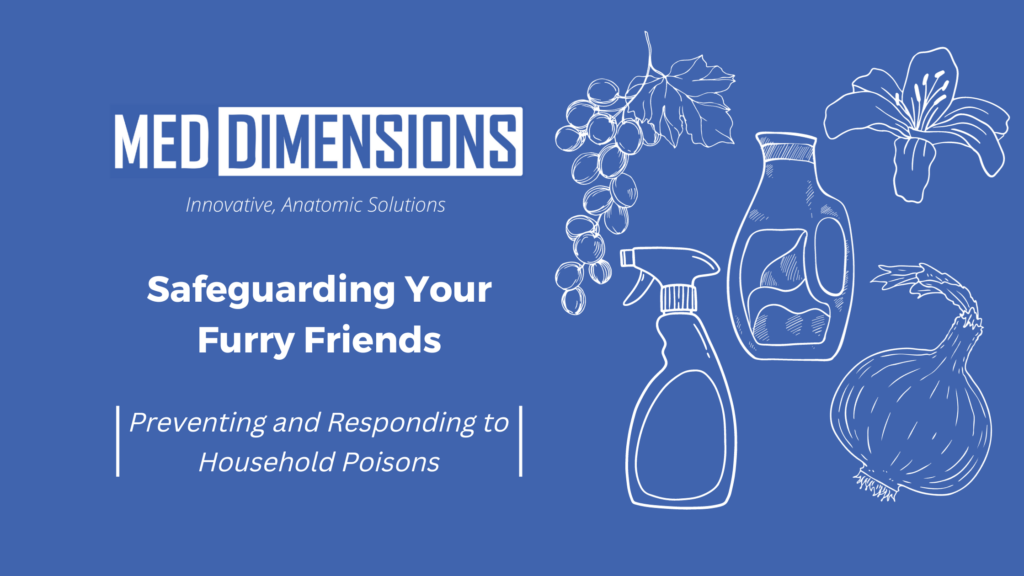Safeguarding Your Furry Friends: Preventing and Responding to Household Poisons

National Poison Prevention Week has arrived, and it’s crucial to turn our attention to our four-legged companions. Our homes, filled with seemingly harmless items, can pose hidden dangers to our beloved cats and dogs. In this blog post, we’ll explore common household poisons that threaten our pets, proactive measures to prevent exposure, and a comprehensive guide on what to do if your pet is poisoned and what to expect during a visit to the vet.
- Identifying Common Household Poisons for Pets:
A variety of everyday items can be toxic to our furry friends. From certain foods and plants to household chemicals, awareness is the first line of defense. Chocolate, grapes, onions, lilies, and certain cleaning products are just a few examples of substances that can be harmful to cats and dogs. Understanding these potential dangers is essential for creating a pet-safe environment. - Preventive Measures to Protect Your Pets:
Prevention is key in ensuring your pets remain safe from household poisons. Simple actions like storing cleaning products out of reach, securing trash cans, and avoiding feeding pets human foods can significantly reduce the risk of accidental poisoning. Additionally, being mindful of plants within and around your home and removing toxic varieties can contribute to a safer living space for your pets. - Recognizing Signs of Poisoning:
Despite our best efforts, accidents can happen. It’s crucial to be familiar with the signs of poisoning in pets. Symptoms may include vomiting, diarrhea, lethargy, difficulty breathing, seizures, and more. Recognizing these signs early can be crucial in seeking prompt veterinary attention. - Immediate Steps if Your Pet is Poisoned:
In the event of suspected poisoning, quick action is paramount. Contact your veterinarian or an emergency poison control hotline immediately. Do not attempt home remedies without professional guidance. If possible, have information on the substance ingested, the quantity, and the time of ingestion ready for the veterinarian. - What to Expect at the Vet:
When you arrive at the vet, the team will perform a thorough examination and may conduct diagnostic tests to assess the extent of the poisoning. Treatment may include inducing vomiting, administering activated charcoal, intravenous fluids, and other supportive care measures. The vet will guide you through the process, answer your questions, and keep you informed about your pet’s condition. - Follow-up Care at Home:
After your pet receives initial treatment, follow-up care at home may be necessary. This could involve administering prescribed medications, monitoring for any lingering symptoms, and attending scheduled follow-up appointments. It’s crucial to adhere to the veterinarian’s recommendations for a full and speedy recovery.
As we observe National Poison Prevention Week, let’s extend our commitment to safeguarding our pets from potential dangers within our homes. By staying informed about common household poisons, taking preventive measures, recognizing signs of poisoning, and acting swiftly in the event of an emergency, we can ensure our beloved cats and dogs lead happy, healthy lives. Remember, when it comes to your pet’s well-being, knowledge and preparedness are the best forms of prevention.